Metallography Testing
We have extensive experience across a wide range of industries
Metallography Testing Sample Preparation
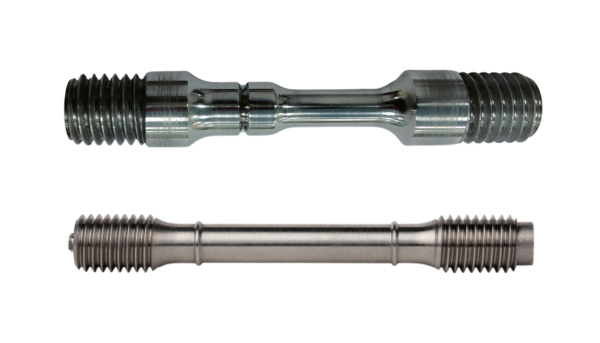
Metallography testing involves the study of a material’s microstructure to evaluate its grain structure, phase distribution, defects, and overall quality. Proper sample preparation is crucial for obtaining accurate and reliable results. At MIC Labs, the sample preparation process follows ASTM, ISO, and IS standards, ensuring consistency and precision.
The process begins with sample selection, where a representative portion of the material is chosen. The selected sample is then sectioned using precision cutting techniques to avoid altering the microstructure. After sectioning, the sample undergoes mounting, where it is embedded in a resin or epoxy to facilitate handling and protect the edges during further processing.
The next step is grinding and polishing, where the sample surface is progressively refined using abrasive papers and polishing compounds to achieve a smooth, mirror-like finish. This step is critical to eliminating scratches and distortions that could interfere with microscopic analysis. If required, the sample undergoes etching, where it is treated with chemical reagents to reveal microstructural details like grain boundaries and phase distributions.
Once prepared, the sample is examined under a metallurgical microscope, scanning electron microscope (SEM), or optical microscope, depending on the testing requirements. This detailed examination helps assess the material’s properties, including grain size, inclusion content, porosity, and heat treatment effects, making metallography essential for quality control, failure analysis, and research in industries like aerospace, automotive, defense, and manufacturing.
Metallography Testing Sample Preparation – FAQs
1. Why is sample preparation important in metallography testing?
Proper sample preparation ensures accurate microstructural analysis by removing surface irregularities, minimizing distortions, and enhancing visibility under a microscope. It helps in identifying grain structure, phases, inclusions, and defects without interference.
2. What are the key steps in metallography sample preparation?
The process includes sectioning (cutting the sample), mounting (embedding in resin/epoxy), grinding (smoothing the surface), polishing (achieving a mirror-like finish), and etching (revealing microstructural details using chemical reagents). Each step is essential to obtaining clear and reliable results.
3. What materials require metallographic sample preparation?
Metallography is used for metals, alloys, ceramics, and composite materials in industries like aerospace, automotive, manufacturing, and defense to assess material properties and quality.
4. What types of microscopes are used for metallography testing?
Metallographic analysis is performed using optical microscopes, scanning electron microscopes (SEM), and digital image analysis systems to examine microstructures at different magnifications and detail levels.
5. How does etching help in metallography testing?
Etching uses chemical solutions to reveal features like grain boundaries, phase distributions, and defects that are not visible in the polished state. The type of etchant depends on the material being tested and the specific microstructural details needed.
Looking for tensile testing services in India? Get accurate, NABL-certified material testing with advanced Universal Testing Machines (UTMs) today!
Metallography Testing Gripping Process
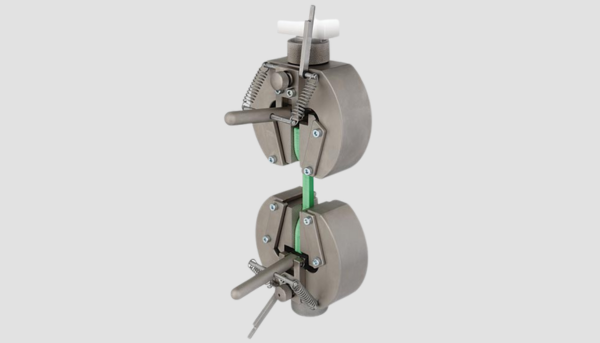
Gripping in metallography testing refers to how a sample is securely held during cutting, grinding, polishing, and microscopic examination to ensure stability and accuracy without introducing distortions. Proper gripping techniques are essential for obtaining reliable metallographic results.
The process begins with sample sectioning, where a precision cutter with a secure clamping mechanism holds the sample firmly to prevent movement and reduce thermal damage. During mounting, the sample is embedded in resin or epoxy to provide a stable gripping surface for further preparation.
During grinding and polishing, the sample is held in place using manual or automated sample holders to maintain uniform pressure and prevent edge rounding or deformation. The use of mechanical clamps or vacuum fixtures ensures consistent results across multiple samples.
For microscopic examination, the mounted sample is placed on a stage with adjustable grips to allow precise positioning and focusing. Proper gripping at this stage helps prevent movement and ensures clear imaging of the material’s microstructure.
By maintaining a secure grip throughout each stage, MIC Labs ensures that metallography testing provides accurate, repeatable, and high-quality microstructural analysis for aerospace, automotive, defense, and manufacturing applications.
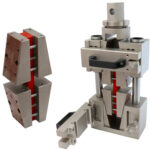
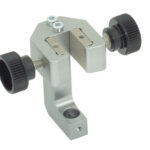
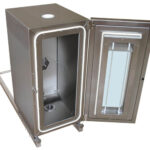
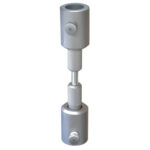
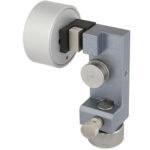
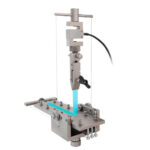
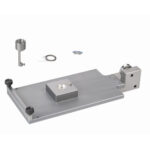
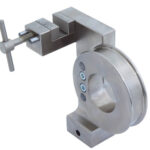
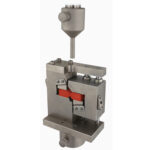
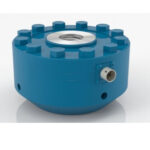
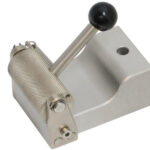
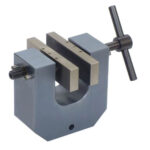
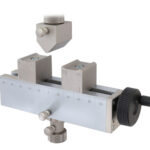

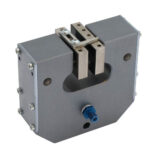
Metallography Testing Gripping Process – FAQs
1. Why is gripping important in metallography testing?
Gripping ensures that the sample remains stable during cutting, grinding, polishing, and microscopic examination. A secure grip prevents movement, reduces deformation, and ensures accurate microstructural analysis.
2. How is a sample held during sectioning?
During sectioning, the sample is securely clamped in a precision cutting machine to prevent vibrations and minimize thermal damage, ensuring a clean and accurate cut.
3. What methods are used to grip samples during grinding and polishing?
Samples are either manually held or placed in automatic sample holders that apply uniform pressure to maintain consistency. Some setups use vacuum fixtures or mechanical clamps to hold multiple samples at once.
4. How are samples secured for microscopic examination?
Mounted samples are placed on a microscope stage with adjustable grips, allowing precise positioning and focusing. This ensures a stable view of the material’s microstructure without movement.
5. What happens if a sample is not gripped properly?
Improper gripping can lead to uneven grinding, surface damage, inaccurate analysis, and poor-quality imaging during microscopic examination. It may also introduce artifacts that distort test results.
Looking for tensile testing services in India? Get accurate, NABL-Certified material testing with advanced Universal Testing Machines (UTMs) today!
Metallography Testing Process
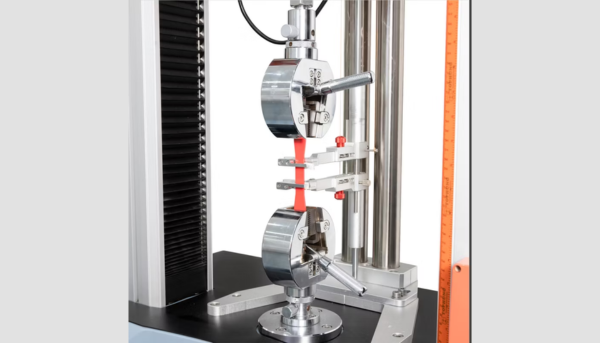
Metallography testing is a crucial process for examining the microstructure of metals and alloys, helping to assess grain structure, phase distribution, and potential defects. The process begins with selecting a representative sample that accurately reflects the material’s properties. This is followed by sectioning, where precision cutting techniques minimize thermal damage and distortion. Next, the sample is mounted in resin or epoxy to provide stability during further preparation. Grinding and polishing then refine the surface using abrasive materials, ensuring a smooth, mirror-like finish for accurate analysis. To reveal structural details, the sample undergoes etching with a chemical solution that highlights grain boundaries and phase differences. Finally, microscopic examination using optical or electron microscopes provides a detailed view of the material’s microstructure. This well-structured process ensures reliable and repeatable results, making metallography testing essential for quality control, failure analysis, and material development in industries like aerospace, automotive, and manufacturing.

Metallography Testing Process – FAQs
1. What is metallography testing?
Metallography testing is the study of a material’s microstructure through cutting, mounting, grinding, polishing, etching, and microscopic examination to assess grain structure, phase distribution, and defects.
2. Why is sample preparation important in metallography?
Proper sample preparation ensures accurate results by minimizing surface damage, eliminating artifacts, and revealing true microstructural details for precise analysis.
3. What is the purpose of etching in metallography?
Etching uses chemical solutions to highlight grain boundaries, phases, and microstructural features that are not visible in the polished state, making them easier to analyze under a microscope.
4. Which microscopes are used for metallography testing?
Optical microscopes and scanning electron microscopes (SEM) are commonly used, with SEM providing higher magnification and deeper insights into material characteristics.
5. In which industries is metallography testing used?
It is widely used in aerospace, automotive, defense, manufacturing, and research laboratories for quality control, failure analysis, and material development.
Looking for tensile testing services in India? Get accurate, NABL-certified material testing with advanced Universal Testing Machines (UTMs) today!
Registration & Certifications
Synergistically incentivize effective imperatives through fully researched intellectual capital. Appropriately fashion client-based.
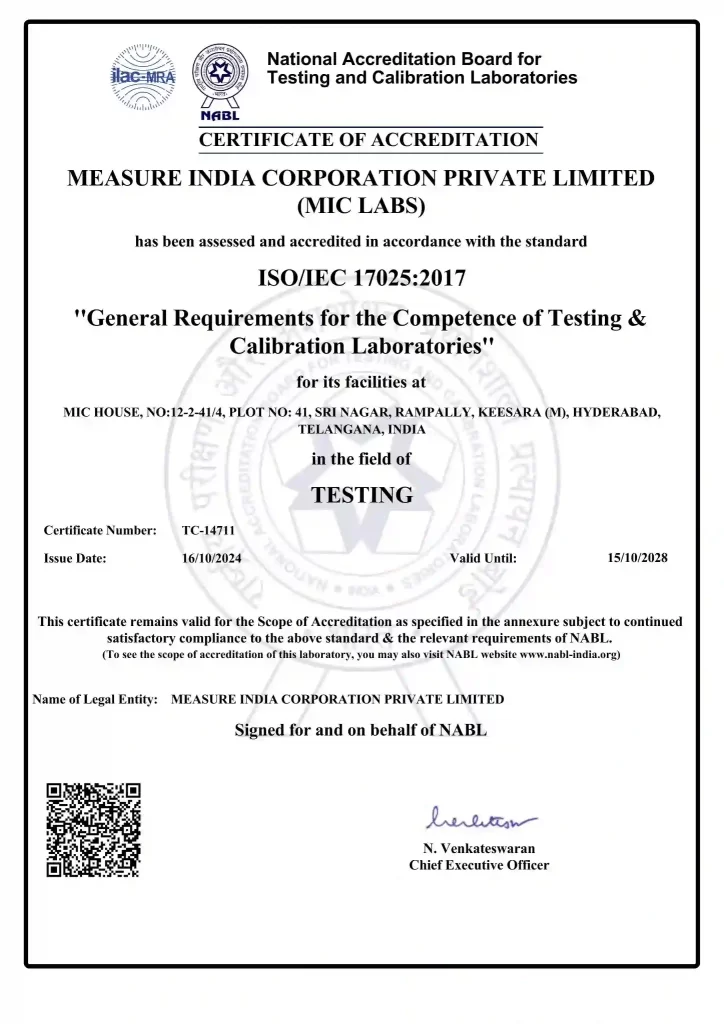
Accredited by NABL
(National Accreditation Board for Testing and Calibration Laboratories – India)
Our laboratory is accredited by NABL as it meets international standards for quality and competence. It operates in accordance with ISO/IEC 17025:2017. NABL accreditation is recognized both nationally and internationally, ensuring the laboratory’s technical competence, impartiality, and reliability.
If you are looking for NABL-accredited testing laboratories in India, our facility provides high-precision testing services in compliance with global quality standards.
Tensile Testing (Standards: ASTM E8M, ASTM E21, ASTM B557M, ASTM A770, ASTM D3039M, IS 1608 Part-1, IS 1608 Part-3, ISO 6892, ASTM D412, ASTM D638)
Compression Testing (Standard: ASTM D575)
Bend Testing (Standards: ASTM E290, IS 1599)
Low Cycle Fatigue Testing (Standard: ASTM E606)
High Cycle Fatigue Testing (Standard: ASTM E466)
Fatigue Crack Growth Rate Testing (Standard: ASTM E647)
Fracture Toughness Testing (K₁C) (Standard: ASTM E399)
Fracture Toughness Testing (J₁C) (Standard: ASTM E1820)
Creep & Stress Rupture Testing (Standard: ASTM E139, E292)
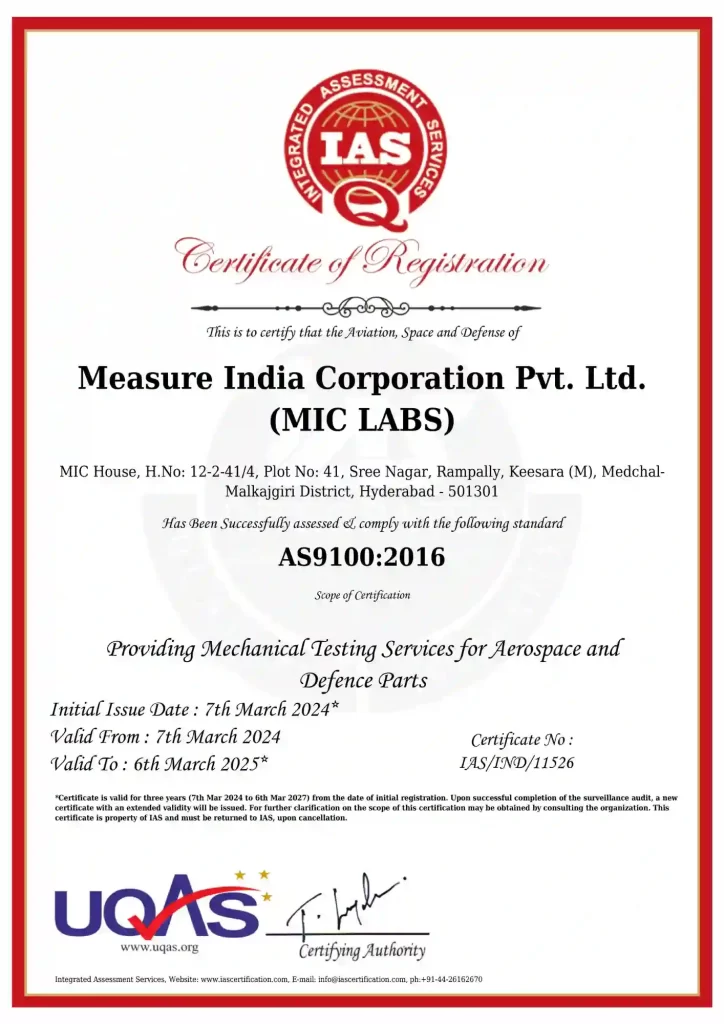
AS9100:2016 Certified
( Integrated Assessment Services )
MIC Labs is certified by IAS in accordance with AS9100:2016, meeting international standards for quality and competence. AS9100:2016 is recognized both nationally and internationally, signifying a laboratory’s technical competence, impartiality, and reliability.
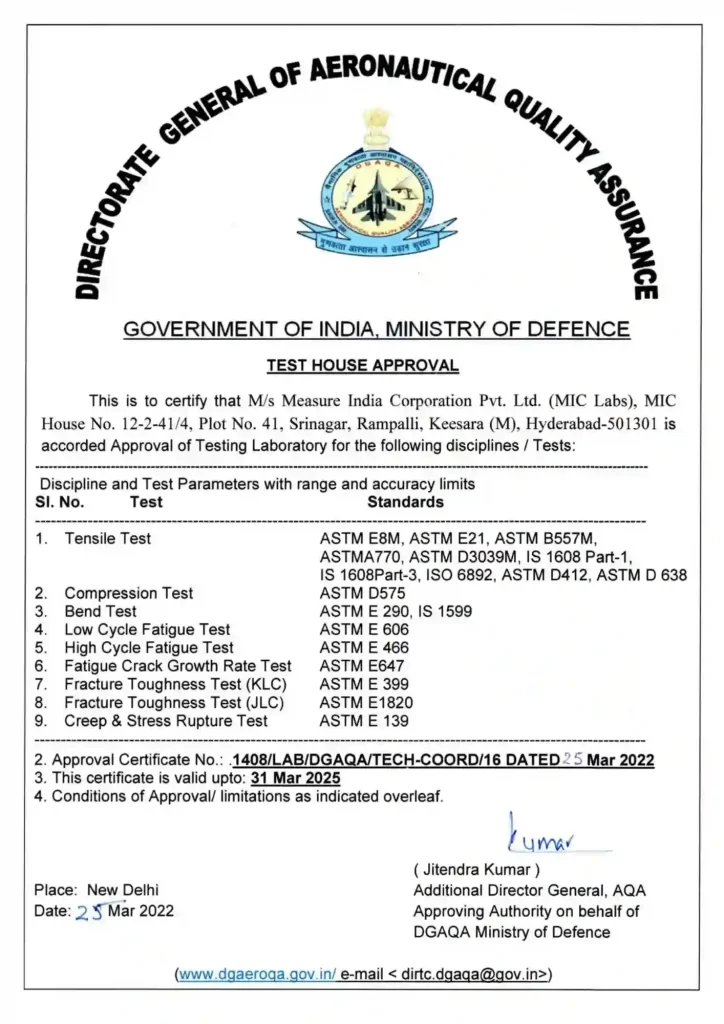
Approved by DGAQA
( Directorate General of Aeronautical Quality Assurance )
MIC Labs is approved by DGAQA ensuring that our laboratory meets the stringent standards required for testing in the aerospace and defense sectors. This approval reflects our technical competence and commitment to delivering reliable and precise results.
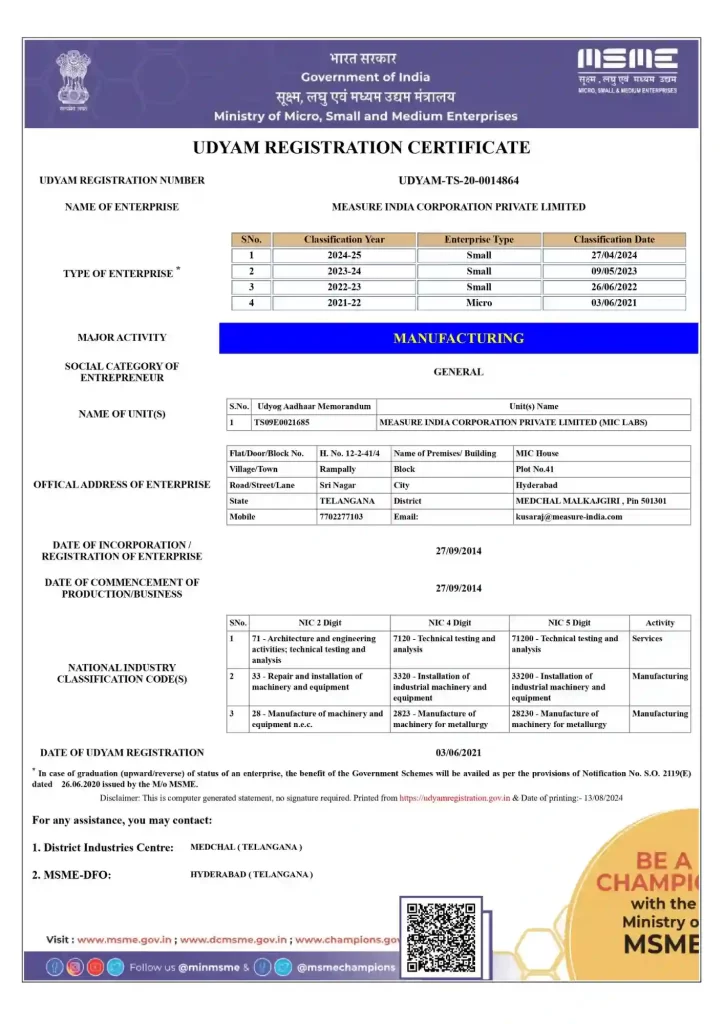
Registered by UDYAM
Measure India Corporation Pvt Ltd is UDYAM registered, recognizing us as a legitimate micro, small, or medium enterprise (MSME) in India. This registration highlights our commitment to quality and compliance with industry standards.
Why Choose Us
We have 20 years of experience in providing material testing systems and offering testing services with great confidence.
- 90+ Products
- 500+ Customers
- 35+ Team Size
- Expertise in guiding and working with top-notch researchers and engineers
- World-class mechanical testing laboratory
Mechanical Testing Lab Services & Universal Testing Machines Suppliers in India
“With over 20 years of experience, Measure India Corporation Pvt Ltd supplies Universal Testing Machines & mechanical testing services, ensuring precision, reliability, and compliance with ASTM, ISO, and global standards across various industries.”
Customer Satisfaction
Business Growth Every Year
500+
Active Clinets

Trusted Clients










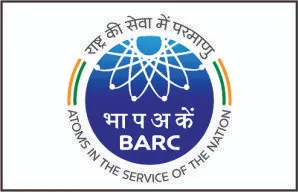







Brands We Deal






Call us Now
For Universal Testing Machine: +91 99899 21114
Air Compressors: 96767 43939
Material Testing Laboratory : +91 91000 44532
Email Us
Email: info@measure-india.com
Opening Hours
From Monday – Saturday
9:00 am to 5:30 pm
Our Location
MIC House, Plot No 41, Srinagar, Rampally,
Hyderabad, Secunderabad, Telangana 501301
Get In Touch With us
We value your inquiries and feedback! Please fill out the form below, and a member of our team will respond to you promptly.
